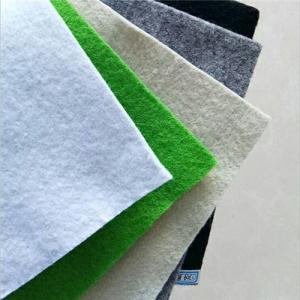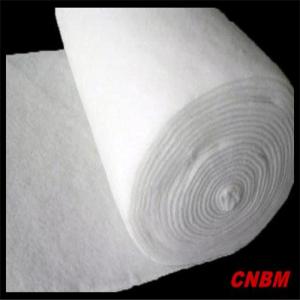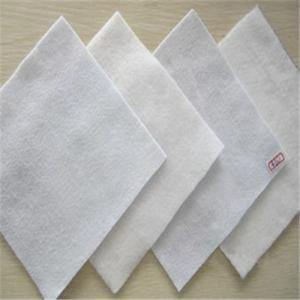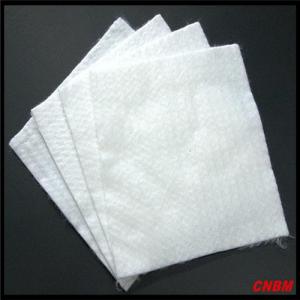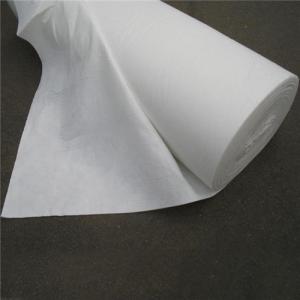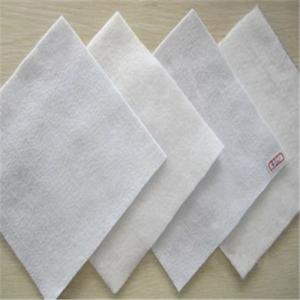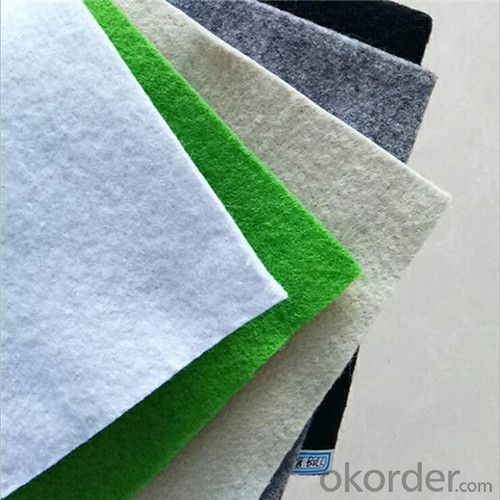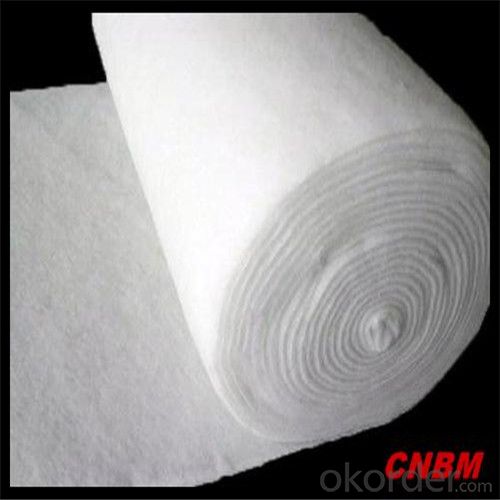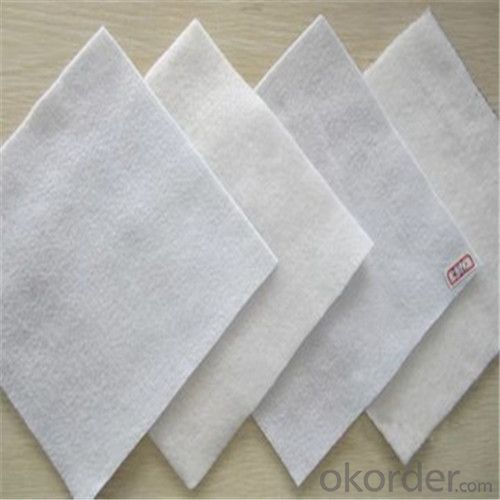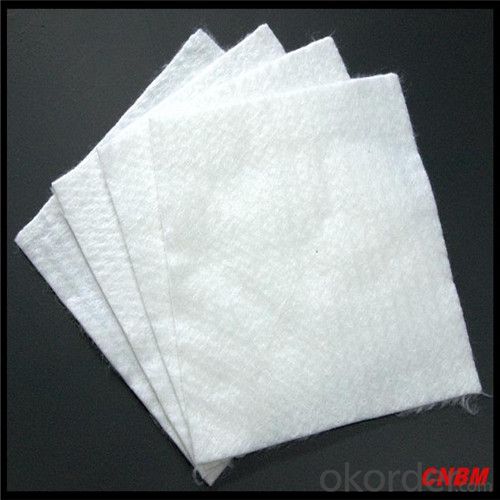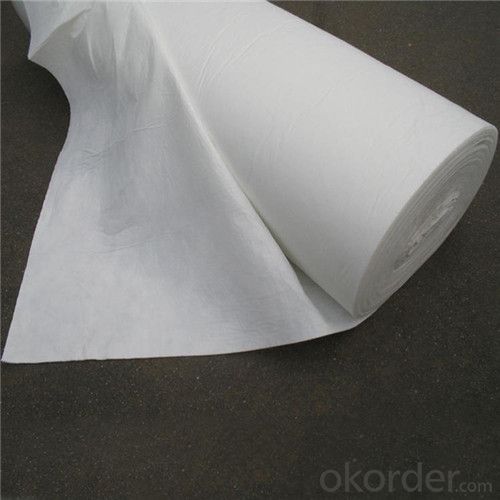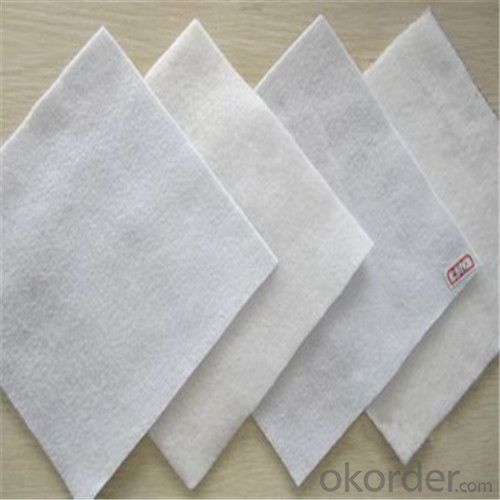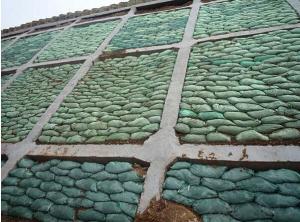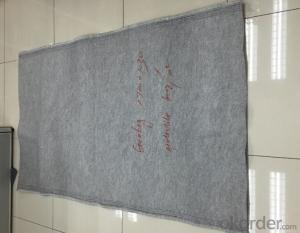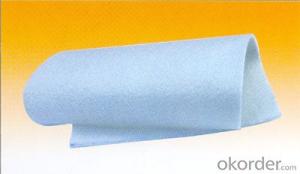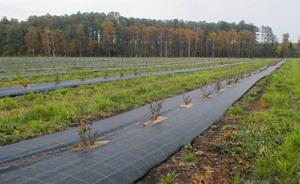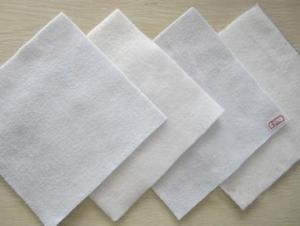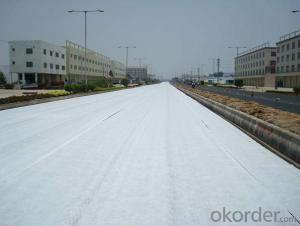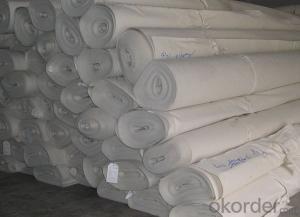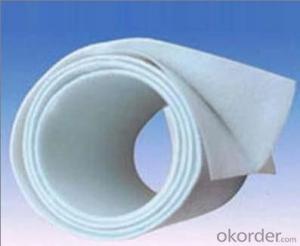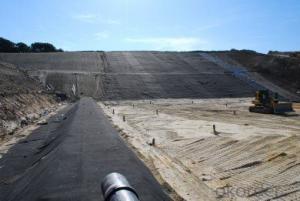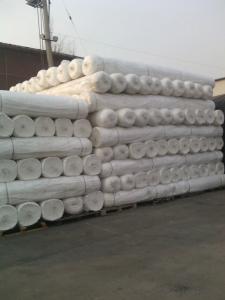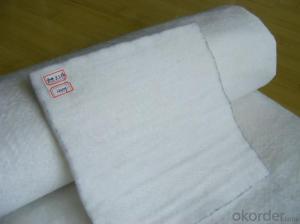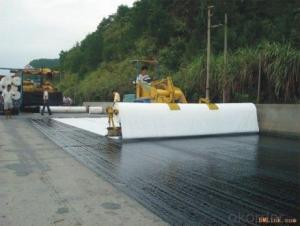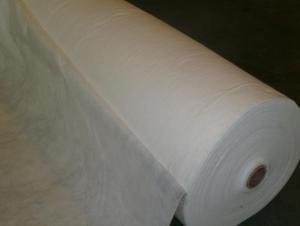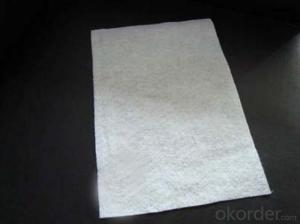Polypropylene Non-woven Geotextile or Non Woven Fabric
- Loading Port:
- China main port
- Payment Terms:
- TT or LC
- Min Order Qty:
- 2000 m²
- Supply Capability:
- 1000000 m²/month
OKorder Service Pledge
OKorder Financial Service
You Might Also Like
Specification
Polypropylene Non-woven Geotextile Function:
Effectively spreading,delivering or resolving the concentrated stress to protect the soil from the damage by external force.
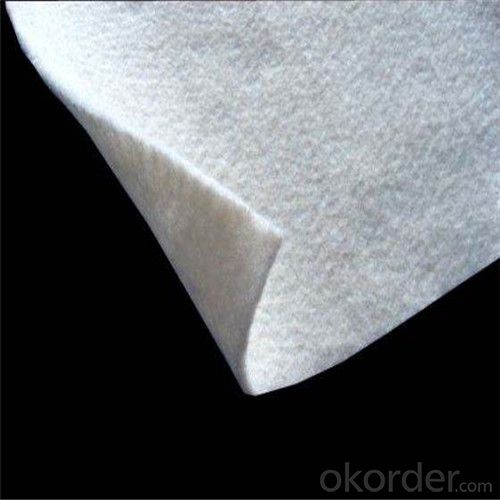
Polypropylene Non-woven Geotextile Application:
The geotextile form impermeable layer inside the soil layer in conjunction with other material (primarily asphalt or plastic film)[mainly used for road,resurfacing,repairing.etc.
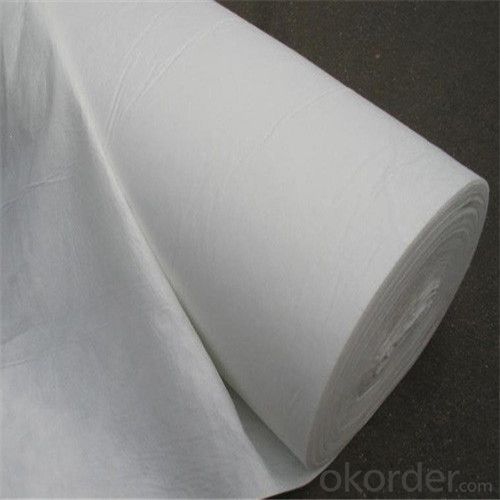
Polypropylene Non-woven Geotextile Application Features:
Can self-seal small cracks while forming watertight laps at the seams.
Provides a strong mechanical bond to poured concrete.
Proven effective in structures under continuous or intermittent hydrostatic pressure-up to 70m (231 ft).
Can be installed in virtually any weather condition, including freezing temperatures and damp conditions. Can be installed on green concrete without primers or adhesives.
Proven effective in both vertical and horizontal applications-i.e., backfilled and property-line walls.
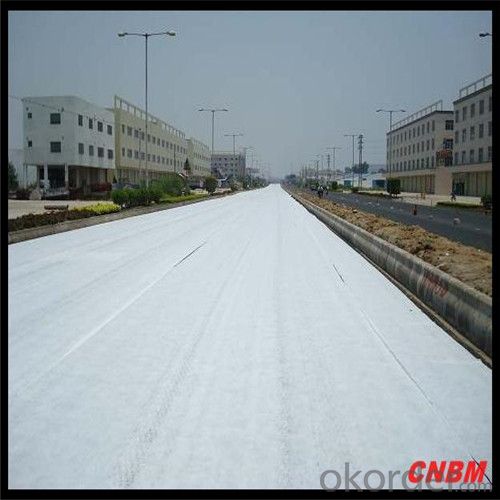
Polypropylene Non-woven Geotextile Packaging & Shipping:
Packing: Plastic Film or Woven bag;
Shipping: About 15 days after receipt the deposit
Polypropylene Non-woven Geotextile Quality Assurance:
1.On a regular basis or as per your request,we entrust national testing agencies to conduct quality inspections
2. Strictly in accordance with the ISO9001-2008 international quality system standard,we monitor and manage the whole process throughout production,quality testing,and measurement to ensure product quality
3. For quality-related construction delay or substandard construction(except for damage or losses due to customer’s responsibility or irresistible natural disasters),we have refunding,replacement,and repair services.We will respond to customers’ feedbacks on quality issues within 24 hours.
- Q: What are the considerations for geotextile selection in road rehabilitation projects?
- When selecting geotextiles for road rehabilitation projects, several factors need to be considered. These include the type and severity of the road distress, the traffic volume and load requirements, the soil conditions, and any environmental concerns. Additionally, the geotextile's strength, durability, and compatibility with other materials used in the road rehabilitation process should also be taken into account. Proper consideration of these factors ensures that the selected geotextile will effectively enhance the road's performance and longevity.
- Q: How do geotextiles contribute to soil reinforcement?
- Geotextiles contribute to soil reinforcement by providing a stable and durable layer that prevents soil erosion, improves soil stability, and enhances load-bearing capacity. They act as a barrier against soil movement, distribute loads more evenly, and increase the overall strength of the soil. Additionally, geotextiles allow for better water drainage, reducing the risk of water accumulation and weakening the soil.
- Q: Design of interlocking turf slope protection brick directly on the geotextile, river earth side by 1: 2.5 slope excavation, began laying geotextile, grass sand and gravel, can lay it? Geotextile laying on the grassroots what are the requirements? More
- No special requirements, mainly from the role of filtering, over the water, but I, specializing in the production of geotextile, geomembrane, wish smooth
- Q: Differences between staple acupuncture nonwoven geotextile and filament spunbonded nonwoven geotextile
- Appearance of different shapes: staple acupuncture non-woven geotextile in the appearance of the surface of the fiber is shorter, and filament spunbond acupuncture non-woven geotextile surface fiber longer. Different materials: staple acupuncture non-woven geotextile with PET polyester staple fiber acupuncture, and filament spunbond acupuncture non-woven geotextile made of polyester chips. Production equipment and different technology: staple acupuncture non-woven geotextile is the polyester staple fiber through the mixing - clutter - comb - shop - acupuncture, and filament spunbond acupuncture non-woven geotextile is the polyester Sliced hot melt - spinning - carding - shop - acupuncture. Implementation of different standards: staple acupuncture non-woven geotextile implementation of GB / T-2008 standards, and filament spunbond acupuncture non-woven geotextile implementation of GB / T-2008 standard. The same specifications of filament spunbonded acupuncture non-woven geotextile quality is better than staple acupuncture non-woven geotextile. Price: the same specifications of polyester staple acupuncture non-woven geotextile price is lower than filament spunbond acupuncture non-woven geotextile.
- Q: Please geotextile manufacturers offer,
- Please geotextile manufacturers offer,
- Q: What are the different types of geotextile installation equipment?
- Some common types of geotextile installation equipment include geotextile rollers, geotextile stitchers, geotextile spreaders, geotextile staplers, and geotextile tensioners. These tools are used to efficiently and effectively install geotextiles in various applications such as erosion control, soil stabilization, and drainage systems.
- Q: What are the design considerations for geotextile-reinforced soil walls?
- Some of the design considerations for geotextile-reinforced soil walls include the selection of appropriate geotextile material, determining the required strength and stability of the wall, evaluating the site conditions and soil properties, considering the drainage requirements, ensuring proper connection and anchorage of the geotextile to the wall, and considering any potential environmental factors that may affect the performance of the wall.
- Q: 250 grams of two cloth a film 0.8 thick geotextile what price
- 250 grams of two cloth a film 0.8 thick geotextile per square meter between about 10 yuan -13 yuan, the current price is the lowest in recent years.
- Q: Can geotextiles be used in shoreline erosion control projects?
- Yes, geotextiles can be effectively used in shoreline erosion control projects. Geotextiles are permeable fabrics that can be installed along shorelines to stabilize the soil and prevent erosion caused by waves and currents. They can be used as a layer to separate the soil from the water, allowing for water filtration while reducing soil erosion.
- Q: How do geotextiles help with erosion control on coastal cliffs?
- Geotextiles help with erosion control on coastal cliffs by acting as a barrier that prevents the soil from being washed away by the force of waves and rainwater runoff. These synthetic fabrics are placed along the cliff face to stabilize the soil and hold it in place, reducing the impact of erosion. Additionally, geotextiles promote vegetation growth by providing a suitable environment for plants to establish roots, further reinforcing the soil and preventing erosion.
Send your message to us
Polypropylene Non-woven Geotextile or Non Woven Fabric
- Loading Port:
- China main port
- Payment Terms:
- TT or LC
- Min Order Qty:
- 2000 m²
- Supply Capability:
- 1000000 m²/month
OKorder Service Pledge
OKorder Financial Service
Similar products
Hot products
Hot Searches
Related keywords
